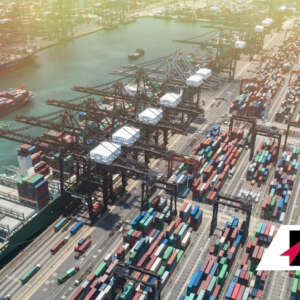Supply chain issues are a part of doing business. A supply chain that is flexible is an important factor, particularly in today’s uncertain and fast-changing environment. Many businesses plan production and distribution every 15 days which means that they need to adapt to any issues that come up with volume, shipments, and routes. Being able to react quickly is imperative in creating a strong supply chain so there must be coordination between manufacturing, warehousing, order management, and shipping.
Flexibility in Logistics
Flexible logistics means having a cloud-based digital supply chain that collects and shared information across the entire chain. It serves as a control panel that combines all the systems, processes, and information and real-time. It is comprised of three main features:
- – Delivery Model. Using Software as Services (SaaS) creates networks outside the company, which saves money by reducing costs.
- – This combines the best commercial practices with supply chain management tools that can be deployed by modules.
- – Services like analytics, assessments, business intelligence, and administration are added to the platform.
Flexibility can be achieved through functional logistics systems that are able to carry out tasks. They must be accurate, easy to implement, and customizable. Creating processes to deal with unexpected events helps to create a series of standardized and structured solutions that allow for flexible responses.
Issues that can be Solved with Flexible Logistics
Logistics managers know that issues arise often and must be dealt with quickly and effectively, so they do not disrupt the entire chain for an extended period of time. Delays can be caused for a variety of reasons and have severe consequences for the supply chain.
Extreme Weather. A flexible supply chain can work around extreme weather events by diverting to other transportation methods. For example, railroads can avoid traffic backups due to closed roads from flooding.
Visibility. Visibility is critical to the success of a supply chain. Using a bar code system that yields information in real-time allows for complete visibility.
Political Issues. Political decisions regarding free trade and tariffs can be mitigated by increasing or decreasing the capacity of warehouses and inventories.
These issues, and others, can be resolved with a supply chain that is flexible and able to adapt to changes.
Forecasting Improvements
Forecasting is a big part of having a supply chain operate smoothly, however, errors can be due to both customers and suppliers. While it is preferable to assume that a vendor will be able to make shipments on time, supplier performance is dynamic and is always changing based on the current market. Shifts in customer demand and market trends can also affect the forecast, so when companies rely on historical data alone when stocking parts, they may have an excess or shortage of inventory.
Companies with high product customization can solve this issue by segmenting parts into two categories: bought to stock and bought to order. This segmentation can reduce part shortages and minimize the volume of parts held in inventory. Segmentation must be continually updated to account for supplier changes as well as changing market conditions. Segmentation algorithms should be refreshed every 15 to 20 days.
The SSP Approach for a Flexible Supply Chain
Part of a flexible supply chain is the ability to forecast and then adapt as needed as issues arise. While companies are always trying to improve forecasting and planning, many are finding success with a new approach called ‘segment, stock, and plan’ or SSP, for low-volume high-mix companies.
This approach focuses on improving part segmentation, finding better accuracy for stocking algorithms, and building flexibility into the planning process. SSP involves manufacturers creating virtual kits that contain the parts needed for specialized products. This clearly does not eliminate all supply chain issues completely but can help to reduce part shortages by 50 to 90 percent while also decreasing inventory by 15 to 35 percent when needed. This means lower inventory carrying costs, increased on-time delivery, and flexibility within the process.
Flexibility within the supply chain is important to be able to adjust to changing market conditions quickly. A supply chain that works to be flexible will be able to continue to meet delivery deadlines, regardless of what goes on with suppliers or shipment delays.
Your Trusted Partner
At Red Arrow Logistics, we provide expertise and white glove customer service with fast-growing, complex, and high-value supply chains. As the next-generation model of logistics companies, we offer tailored transportation and logistics solutions — from single shipments to complex over-dimensional and international orders.
Red Arrow offers the scale and scope of services including air, ocean, and ground transportation to meet the budget and schedule requirements of the largest and smallest companies alike. If we can be of assistance, please email us at info@redarrowlogistics.com or give us a call at 425-747-7914.




